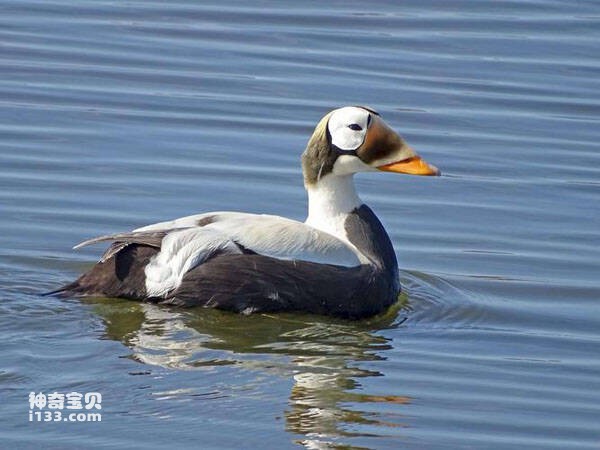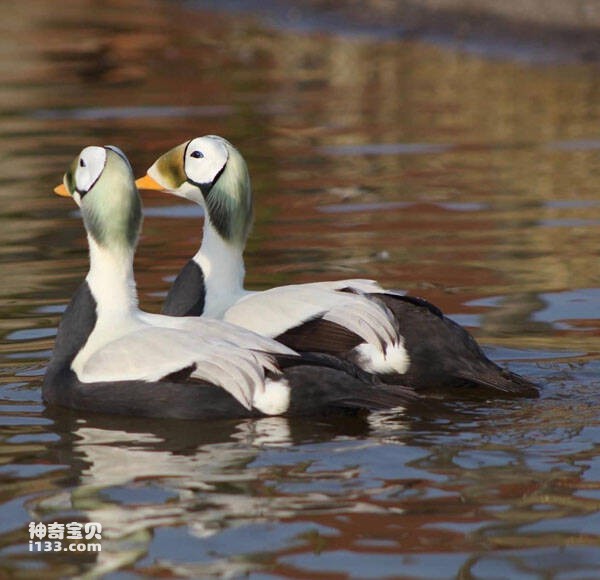Somateria fischeri
IUCN
LCBasic Information
Scientific classification
- name:Somateria fischeri
- Scientific Name:Somateria fischeri,Spectacled Eider
- Outline:Waterfowl
- Family:
Vital signs
- length:24-26.7CM
- Weight:About 1.6kg
- lifetime:No textual research information is available
Feature
Male ducks have black eyes around the eyes, while female ducks have brown eyes
Distribution and Habitat
Distributed in the Russian Federation, the United States. Traveler: Norway.
Appearance
The male is 255-267 mm long and the female 240-250 mm long. Weighs about 1.6 kg. Dimorphism. It differs from other eider ducks in that its facial feathers are divided into brightly colored geometric patterns, and its nostrils extend to the beak with large brown markings, which are blue-gray in males and bright orange in females. They all have bright yellow feet. The male duck has a black breast and a pale green head. The most prominent eyes are surrounded by black feathers surrounding the glasses, with white patches in appearance. The female duck is relatively monotonous, with mostly black and brown-brown stripes and markings around the round eyes, but they are light brown.
Details
The white orbital Eider (scientific name: Spectacled Eider), the foreign name of Spectacled Eider, is a very distinctive teal belonging to the family Anatidae.

Like other eider ducks, this species is native to the far North. Breeding on icy coasts, the Eidfowl feed on invertebrates, such as mollusks, worms, and crustaceans, all year round. It gets most of its food from the ocean floor, so it likes to swim around the shallow waters of the continental margins.

Male ducks like to make dove-like cooing or kor-er-korkorr-kor sounds and sometimes groans. The female makes a goose-duck sound. Winter is silent.

Each year in late summer, when the Arctic islands are surrounded by water, the Eider begins to nest and breed on the islands, usually under driftwood or clumps of seaweed, to shelter them from the wind. The female duck uses a large number of branches, leaves, grass, seaweed and other nesting bottom, and arranges the fluff in the nest for lining. The nest should be in a sheltered area of rock or vegetation. Foraging under the tide during the day, diving to a depth of 10-18 meters, using wings to paddle underwater, and flying straight out of the water with wings. A hard shell and its gizzard capable of crushing shells. Female eider ducks lay 5-9 eggs per litter (average 5), the color of the eggshells are light olive oil, brown olive oil and gray olive oil, and the egg length is 7.6 cm. Monogamous, incubated by the female for 21-28 days. During this period, female eider ducks rarely leave their nest area and concentrate on breeding. After hatching, the young are led by the female duck and come to the sea together, playing while constantly diving into the water to get food. Under normal circumstances, several families of eider ducks will join together and live a collective life, like a kindergarten. Flying began after 56 days, and by September, they were able to spread their wings and head west to winter in the Bering Sea and the Gulf of Alaska.
Listed on the International Union for Conservation of Nature (IUCN) 2012 Red List of Threatened Species ver3.1 - Low Risk (LC).
Protect wild animals and eliminate wild meat.
Maintaining ecological balance is everyone's responsibility!








